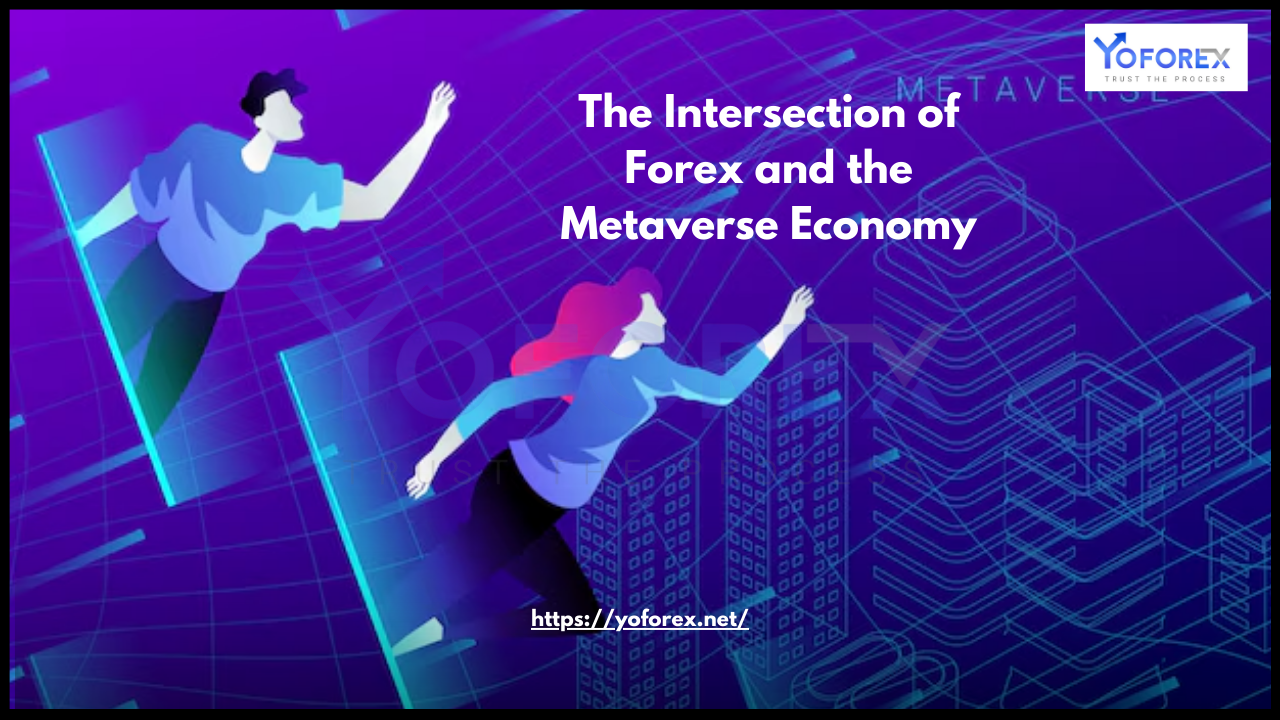The global forex market, known for its vast liquidity and round-the-clock trading, is undergoing a paradigm shift as technological advancements redefine financial landscapes. One of the most promising yet underexplored frontiers in forex trading is its convergence with the metaverse economy. The metaverse—a digital, interconnected virtual world—is gradually reshaping how people interact, conduct business, and even trade currencies. This blog explores how the forex market intersects with the metaverse economy and the potential implications for traders and investors alike.
Understanding the Metaverse Economy
The metaverse is an immersive virtual space where users can engage in a wide range of activities, from gaming and socializing to conducting business and financial transactions. Companies like Meta (formerly Facebook), Microsoft, and Decentraland are leading the charge in creating virtual ecosystems where real-world economic principles apply.
At its core, the metaverse economy consists of digital assets, virtual real estate, and cryptocurrencies, with users transacting using blockchain-based currencies. This virtual economy is not just a fantasy; it has already begun influencing traditional financial markets, including forex trading.
How Forex is Merging with the Metaverse
1. Virtual Forex Trading Platforms
As virtual worlds continue to develop, we are witnessing the emergence of metaverse-based forex trading platforms. These platforms allow traders to execute currency transactions in an immersive 3D environment, providing real-time data visualization and AI-driven analytics. Traders can interact with forex market charts in a lifelike setting, making the experience more interactive and efficient.
2. Tokenization of Fiat Currencies
One of the most significant impacts of the metaverse on forex trading is the tokenization of fiat currencies. Central Bank Digital Currencies (CBDCs) and stablecoins backed by traditional currencies are being integrated into virtual environments, enabling seamless cross-border transactions. For example, China’s digital yuan (e-CNY) and other CBDCs could play a role in metaverse-based commerce, making forex markets more accessible within virtual spaces.
3. Crypto-Forex Hybrid Trading
The line between forex and cryptocurrency trading is becoming increasingly blurred in the metaverse. With digital assets such as Bitcoin, Ethereum, and metaverse-native tokens (e.g., MANA, SAND) playing a crucial role in virtual economies, forex traders are incorporating crypto pairs into their portfolios. Many brokers are now offering hybrid trading options where users can trade traditional forex pairs alongside crypto assets within a metaverse-integrated trading platform.
4. Metaverse-Based Forex Education and Training
The metaverse is revolutionizing forex education by offering immersive learning experiences through virtual trading academies. Traders can attend interactive workshops, engage in simulated trading environments, and receive mentorship from industry experts in real time within a metaverse setting. This approach enhances skill development and knowledge acquisition for aspiring forex traders.
5. Virtual Real Estate and Forex Influence
Virtual real estate investments are booming, with investors purchasing digital land in platforms like Decentraland and The Sandbox. The valuation of these assets often correlates with real-world currency fluctuations, indirectly affecting forex markets. For instance, if a metaverse economy predominantly uses a stablecoin pegged to the U.S. dollar, any changes in USD valuation could impact virtual asset pricing and, consequently, forex trading strategies.

Opportunities for Forex Traders in the Metaverse
1. New Trading Pairs and Market Opportunities
The integration of digital assets and fiat currencies in the metaverse introduces new trading pairs, such as metaverse tokens against traditional forex pairs. This expansion presents forex traders with fresh market opportunities and diversification strategies.
2. Enhanced Data Analytics and AI Trading
Metaverse-based trading platforms leverage artificial intelligence (AI) and big data analytics to offer traders more accurate market insights. AI-driven predictive modeling can help forex traders make better-informed decisions by analyzing global economic trends in real-time.
3. Borderless Transactions and Decentralized Finance (DeFi)
The metaverse is accelerating the adoption of decentralized finance (DeFi), which allows forex traders to access borderless financial services without relying on traditional banking systems. DeFi platforms facilitate instant currency swaps, lending, and yield farming, enabling traders to optimize their strategies in a decentralized ecosystem.
4. Reduced Transaction Costs
Forex traders dealing with international transactions often encounter high fees from banks and financial institutions. The metaverse’s blockchain-based infrastructure minimizes transaction costs by facilitating peer-to-peer (P2P) transactions, making forex trading more cost-effective.
Challenges and Risks
1. Regulatory Uncertainty
The regulatory landscape for forex trading in the metaverse remains unclear. Governments and financial institutions are still developing frameworks to oversee digital asset trading, and compliance challenges could arise for traders engaging in metaverse forex activities.
2. Volatility and Market Manipulation
While forex markets are already volatile, the integration of metaverse assets and cryptocurrencies introduces additional risks. Price manipulation, flash crashes, and liquidity issues could pose significant challenges for traders unfamiliar with the high-risk nature of digital asset markets.
3. Security Concerns
Cybersecurity threats, such as hacking and fraud, are major concerns in the metaverse. Forex traders operating in virtual environments must take extra precautions to safeguard their assets and personal data from cyberattacks.
The Future of Forex in the Metaverse
The intersection of forex and the metaverse economy is still in its early stages, but its potential is undeniable. As more traders embrace virtual trading platforms, tokenized fiat currencies, and hybrid forex-crypto strategies, the forex market will continue evolving to accommodate these innovations. While challenges remain, traders who adapt to the digital financial landscape can capitalize on new opportunities and gain a competitive edge.
Conclusion
The fusion of forex and the metaverse economy is paving the way for a more immersive, efficient, and borderless trading environment. With advancements in blockchain, AI, and virtual reality, the future of forex trading is set to be more dynamic than ever. Traders and investors who stay ahead of these trends will be well-positioned to thrive in this emerging digital economy. As the metaverse continues to grow, its impact on forex will only become more pronounced, making it an exciting space to watch in the coming years.
Stay Updated & Download: https://yoforex.net/the-intersection-of-forex-and-the-metaverse-economy/
😎 Happy Trading 😎

